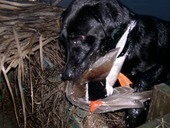The following is a non-exclusive list of firearms that have been involved in injury incidents that the lawyers at Goff and Goff have handled or investigated (Not all of the firearms incidents we investigate result in our opinion that the gun or ammunition was defective. Each incident involves its own facts.)
- Browning Arms and Fabrique Nationale shotguns, such as the Auto-5 series and Citori
- Remington shotguns, such as the Model 870, 11-87, and others
- Remington rifles, such as the Model 742, 700, and 710 (715, 770)
- Ruger Blackhawk single-action revolvers
- Mossberg shotguns, such as the Model 500 and 835
- Mossberg rifles, such as the Model 100 ATR
- Harrington & Richardson, H&R 1871, and New England Firearms (NEF) rifles and shotguns
- Glock pistols
- Marlin lever action rifles
- Winchester rifles and shotguns
- Smith & Wesson pistols such as the Sigma SW9
- Lorcin pistols
- Raven pistols
- Jennings pistols
- Davis Industries pistols and derringers
- Cobra Enterprises pistols and derringers
- Muzzleloader (black powder) guns, such as Connecticut Valley Arms, Knight, and Traditions
- Colt pistols such as the Model 1911 (Colt 45)
- Rossi
- Interarms
- Taurus
- Tanfoglio
- FIE
- Astra
- STAR
- EAA
- Chinese SKS and other SKS military rifles
Accidental gun shot injuries that are caused by the defects in the gun or ammunition affect a great number of people every year. In order to save money, some manufacturers bypass good quality control or safe engineering design procedures and refuse to provide state-of -the-art safeguards which would prevent most of those injuries.
Some companies’ guns are designed such that the trigger mechanism can be precariously perched on the edge of the “sear,” which is designed to prevent the gun from firing unless the trigger is pulled. If the mechanism is perched, a bump or jar can cause the gun to fire, even though the trigger was not pulled. Other guns are designed such that the gun’s firing pin is rest on the back of the ammunition when the gun is not cocked. Many people believe that since the gun is not cocked, it won’t fire. If the hammer or firing pin is resting against the back of the round of ammunition, then the gun may fire with a bump or jar. These types of accidental discharges are often called “drop fires.” They are an extremely hazardous situation that could have been avoided with reasonable engineering practices that date back a hundred years
